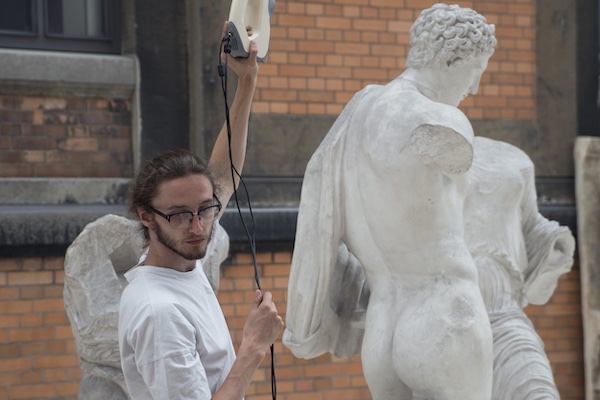Scanning the World One Artifact at a Time
3D scanning helps make museum culture accessible to communities.

Artec 3D partners with Scan the World to make museum collections available digitally to the masses. Image Courtesy of Artec 3D
April 14, 2022
Imagine having fingertip access to renowned museum collections of artwork and artifacts from around the globe as well as being able to explore the creations via a physical 3D print.
Scan the World, a community-led project building a 3D-printable ecosystem of artifacts, is doing just that with a little help from Artec 3D, a 3D scanning maker.
Scan the World aims to democratize sculpture and cultural artifacts leveraging 3D scanning and 3D printing technologies to make individual sculptures and works of art shareable. Using the 3D scanning capabilities, the Scan the World team is creating an extensive ecosystem of free downloadable digital cultural heritage art plucked from museums and communities across the globe. Currently, Scan the World has captured 17,322 objects from 1,884 artists representing 825 physical places. The goal for the digital image library is to provide anyone with Internet access to be able to experience material culture in an emotionally impactful way and without any of the usual barriers such as geographic location and socioeconomic backgrounds, community representatives said.
The work with museums is supported by the Artec 3D partnership, which as a sponsor, is providing use of the Artec Eva professional handheld scanner. The structured-light 3D scanner is adept as making quick, textured, and accurate 3D models of medium-sized objects such as human busts and has an ability to capture objects with black and shiny surfaces, making it a natural fit for sculptures and historical artifacts. Artec 3D’s HD Model AI-powered algorithm more than doubles the scanning resolution from 0.5 mm to 0.2 mm and enables the Scan the World team to capture far finer details of the works of art. Used in tandem with Artec Studio 16, the company’s scanning and data processing software, team members say they are able to pursue reconstruction of artifacts nearly 2x faster.
The first collection to be scanned as a result of the partnership is from the Museum für Kunst und Gewerbe Hamburg. With a library of hundreds of 3D artifacts spanning 4,000 years of human history, Artec Eva will help make this collection accessible to the world, while Artec Studio 16's photogrammetry tool will ensure the museum’s highlights are captured in full, true to life color detail, officials said.
“Scan the World is thrilled to embark on this partnership with Artec 3D to share 3D printable heritage with the world,” said Jonathan Beck, Scan the World founder and manager, in a press release. “By combining Scan the World's strong community, storytelling, and object archival with Artec 3D's industry-leading hardware, this is a very exciting time for the future of high-quality 3D scanned artifacts.”
As part of the effort, Scan the World has also teamed up with Google Arts & Culture. Data archived on the Google platform will be viewable in 3D, with STL files able to be downloaded from Scan the World on the 3D file marketplace MyMiniFactory’s website. As a result, members of the 3D printing community along with educators will be able to freely 3D print models of the artifacts from museums and institutions around the world.
To learn more about Scan the World’s mission, check out this video.
More Artec 3D Coverage
Subscribe to our FREE magazine, FREE email newsletters or both!
About the Author
Beth Stackpole is a contributing editor to Digital Engineering. Send e-mail about this article to [email protected].
Follow DE




